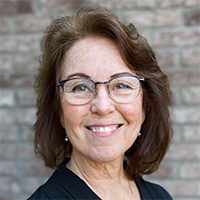 Something Old, Something New, in Uganda!
Something Old, Something New, in Uganda!
Cathy Kreutter's well-crafted picture book Something Old, Something New is a culture-spanning fable about a resourceful schoolboy named Joseph who cherishes his connection to his humble origins. Kreutter adapts a Jewish folktale for a Ugandan village setting with the help of Ugandan illustrator Andrew Obol, who based Joseph's garments on a local primary school's uniform. Musician Rita Sabiiti contributes the lyrics and score for a musical retelling of the plot.
This collaboration creates a satisfying and cozy fictional world. Paradoxically, grounding a story in a specific culture can heighten its universal relatability because the characters and events feel more believable. Co-judge Ellen LaFleche, whose background is working-class French-Canadian, observed that her own grandfather offered the same advice as Joseph's: "Education is something no one can take from you."
Our tale begins with little Joseph visiting his grandfather's tailor shop to be fitted for his first school uniform. The village seems like a happy place, but small and rustic. A new suit of clothing is a luxury he doesn't take for granted.
As Joseph grows up, working his way towards his grandpa's prediction that he will be the first one in the family to go to university, he finds different ways to incorporate the fabric from that outgrown uniform into his school clothing. It's a visible talisman of his community's faith in him and his gratitude for their support. And it's also fun for readers to discover, or guess at, how he'll use the fabric next. Meanwhile, adorable little yellow Weaver Birds flicker through each scene, carrying scraps of the fabric for their own nests and outfits—even staging a college graduation on a tree limb with tiny mortarboards on their heads!
The judges loved the detailed illustrations in soothing shades of green, blue, and brown. The art style reminded me of renowned folktale illustrator Trina Schart Hyman's work for Cricket Magazine in the 1970s-80s. Ellen thought the opening pages were too busy visually. The page numbers disappeared into the illustrations more than half the time, to the point where the judges originally thought the book was unnumbered entirely. The text was set off from the illustrations in boxy captions. It was mostly easy to read, with a few typos. Ellen questioned whether some concepts, like winning a scholarship, might go over the heads of young readers.
We've said it before and we'll say it again: don't leave out the author and illustrator bios. The afterword gave some background on how the book came together, but I had to infer, rather than being certain, that Obol and Sabiiti come from Uganda. We would have liked to learn something about the journey that brought Kreutter to develop her close and respectful relationship with these Ugandan artists. This lovely book, printed in Kampala, shows what great things can happen when we build bridges between cultures.
Read an excerpt from Something Old, Something New, In Uganda! (PDF)
Buy this book on Amazon








